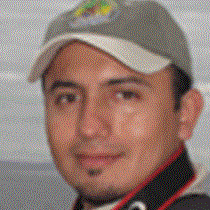Urbina Bay and Tagus Cove, Isabela
Today we continued exploring the western side of Isabela, the largest Island in the Galápagos archipelago. The island was formed by six active volcanoes connected together with a total area of nearly two thousand and nine hundred square miles.
Our first activity of the day was a nature walk at Urbina Bay, located at the western base of Alcedo volcano. What made this hike so interesting was the fact that this whole bay was totally underwater about five decades ago, so technically we all walked on the uplifted sea floor. The evidence of this dramatic geological event can be seen with every step one makes, finding lots of remains of marine creatures attached to the rocks in addition to giant coral heads found far away from the actual coast line. The vegetation at Urbina Bay was very thick, with a lot of flowering plants with fruits. This is just the perfect habitat for land iguanas and giant tortoises; we lost count of how many we saw. The populations of these two land reptiles seemed to be doing very good at this site.
We had a very energetic afternoon with kayaking, deep water snorkeling, Zodiac riding and a wonderful nature walk at Tagus Cove. The deep water snorkelers had good conditions for this activity; the whole group had close encounters with sea lions, big schools of fish, and a shark. The kayakers explored a long section of the coast line at Tagus, finding blue footed boobies, penguins, and flightless cormorants. Those who decided to do the nature walk enjoyed a brisk walk to a view point from which we observed Darwin’s lake and Darwin’s volcano, with many finches and mockingbirds found along the way.
We finished our day with a little bit of rain, but after a hot day it actually felt very good. As we were coming back to the ship it started to clear up and the sun appeared through the clouds to give us a perfect light for pictures.




